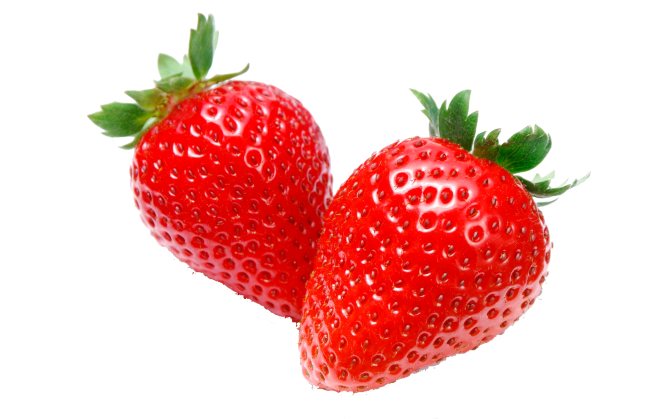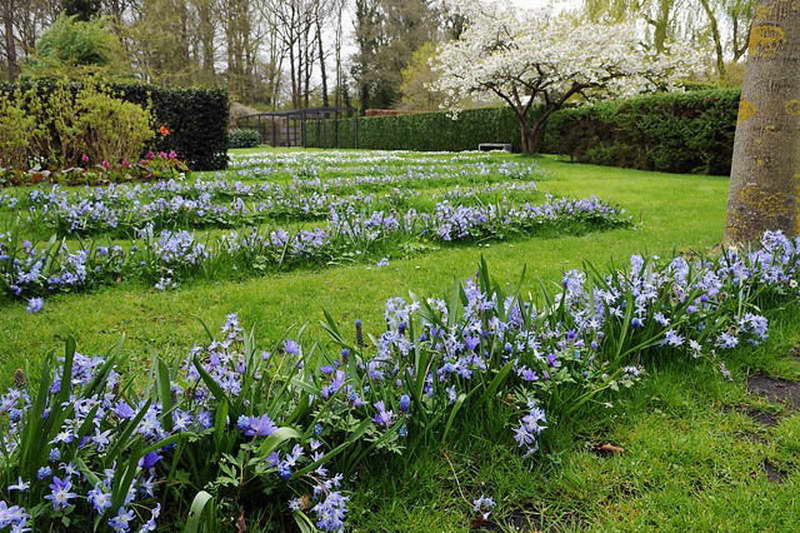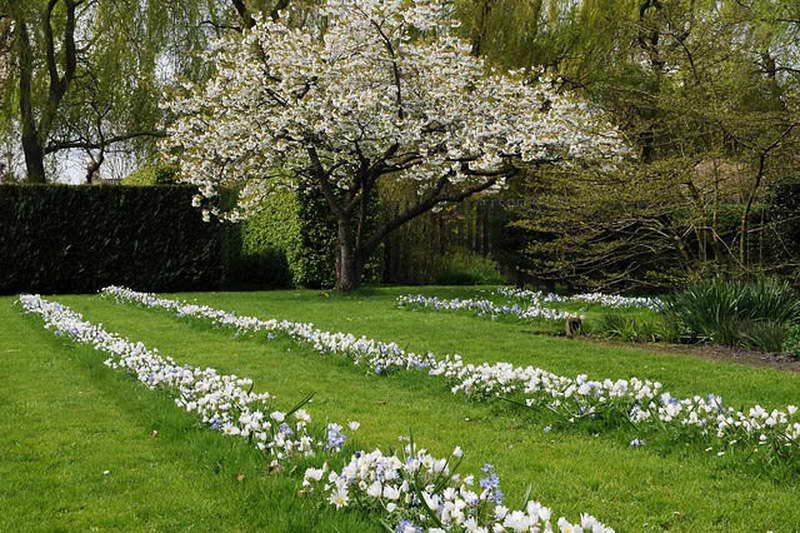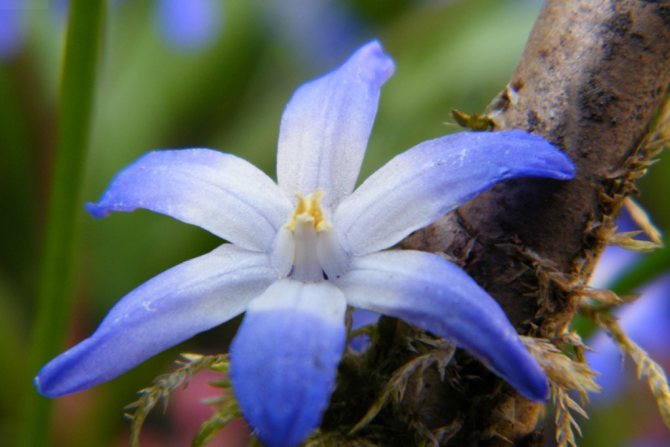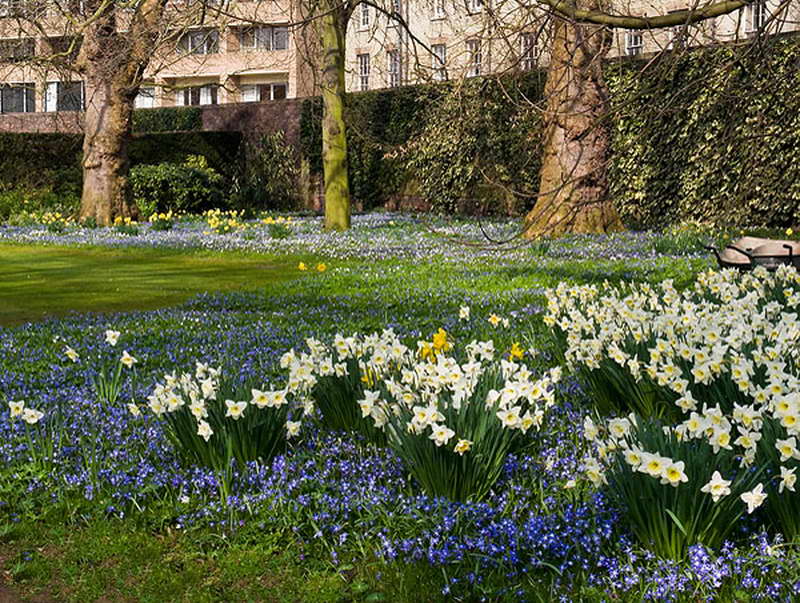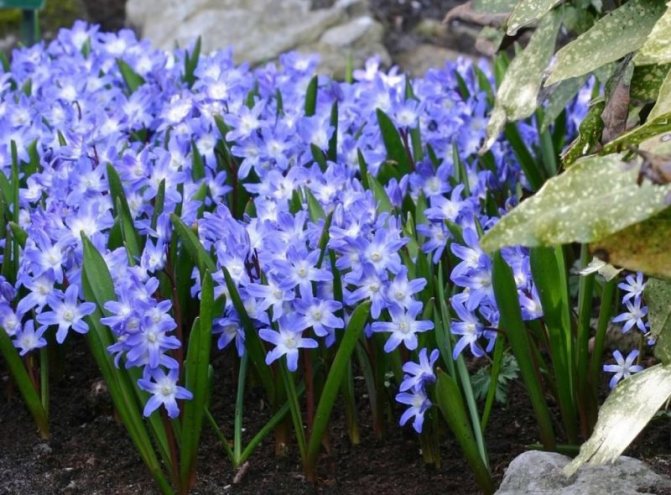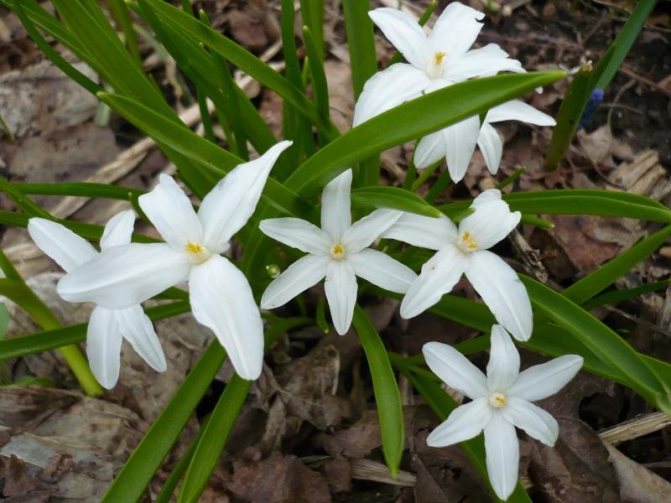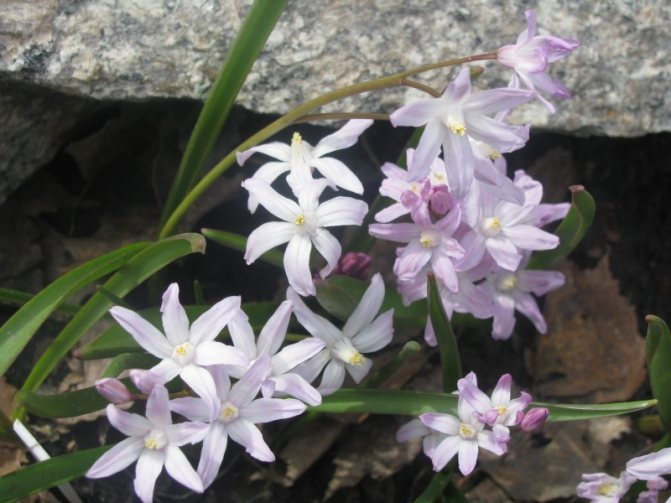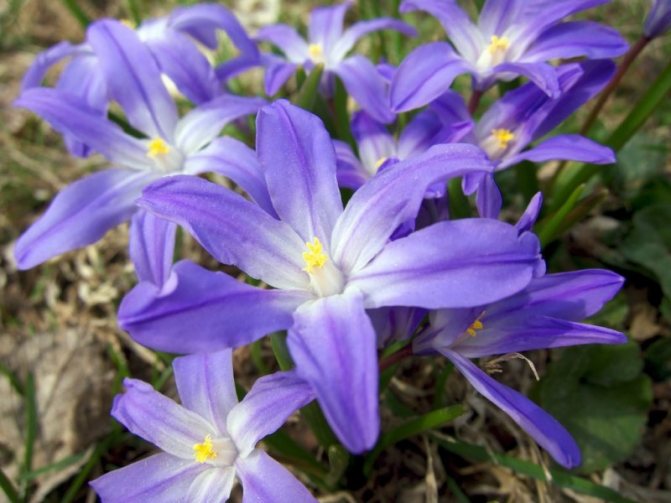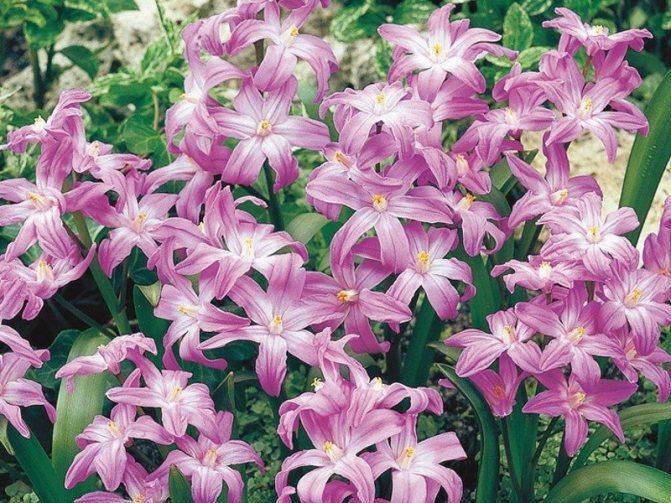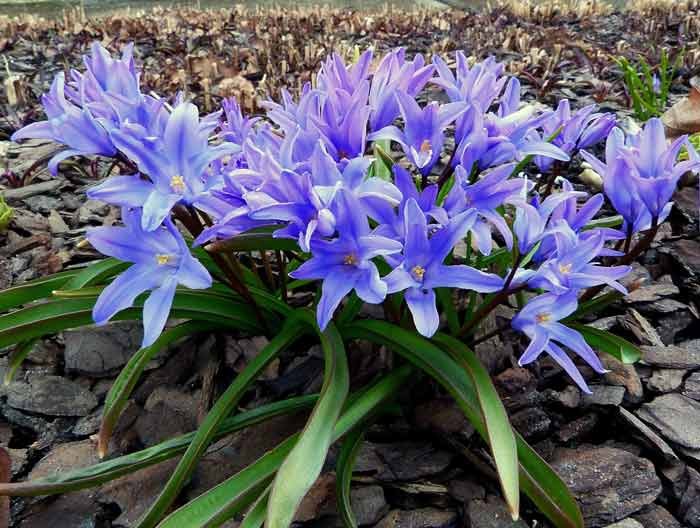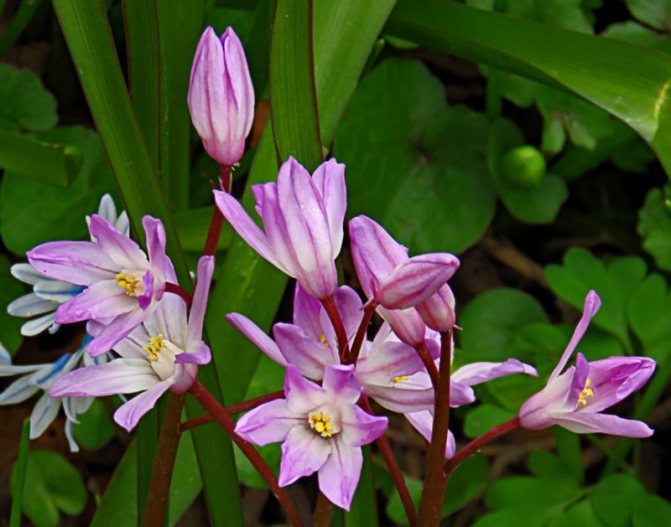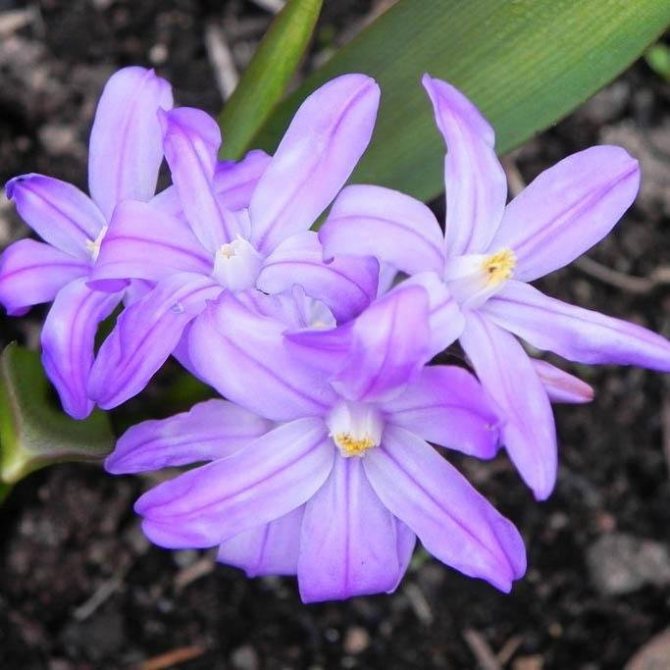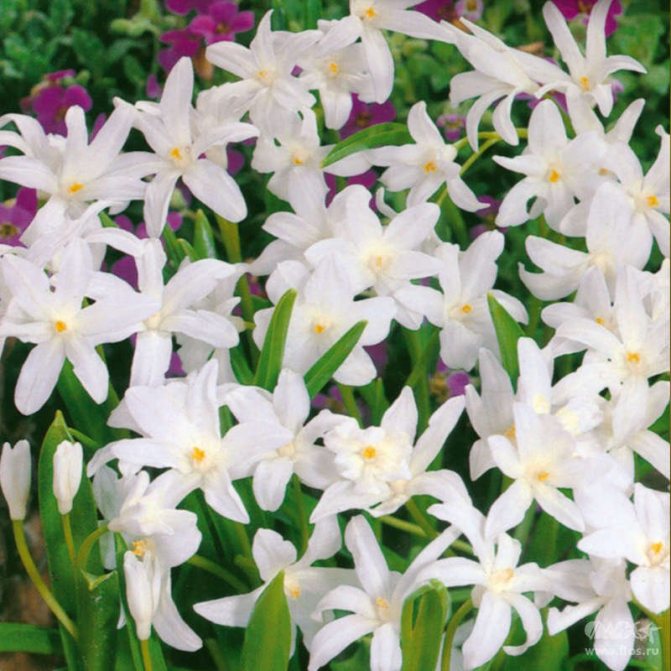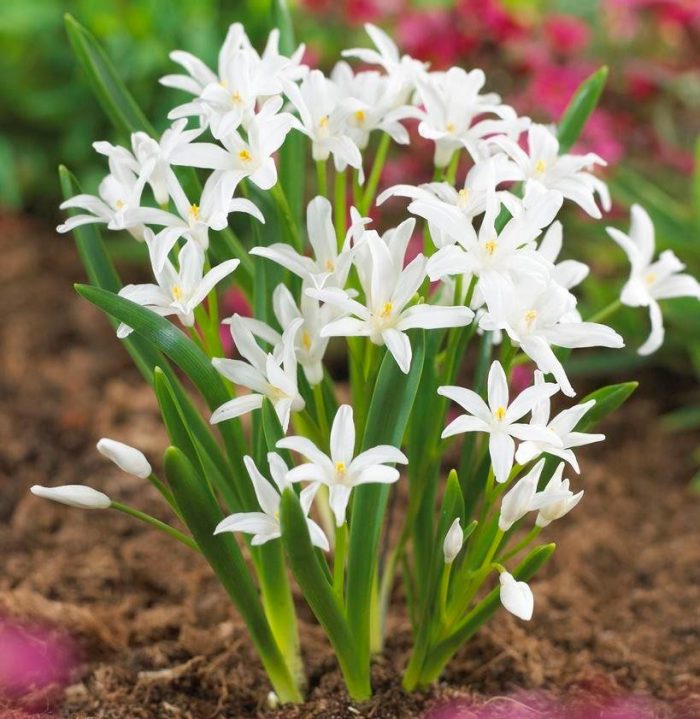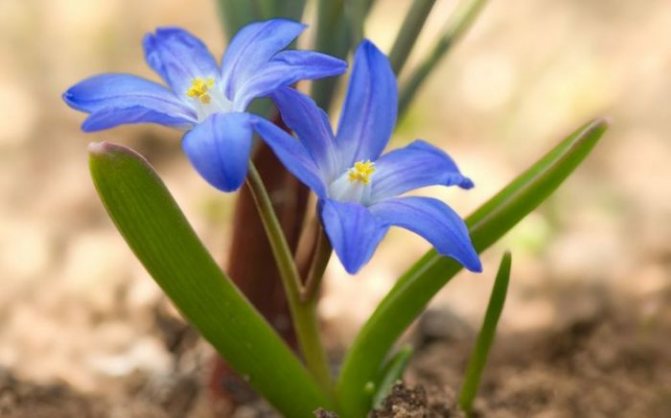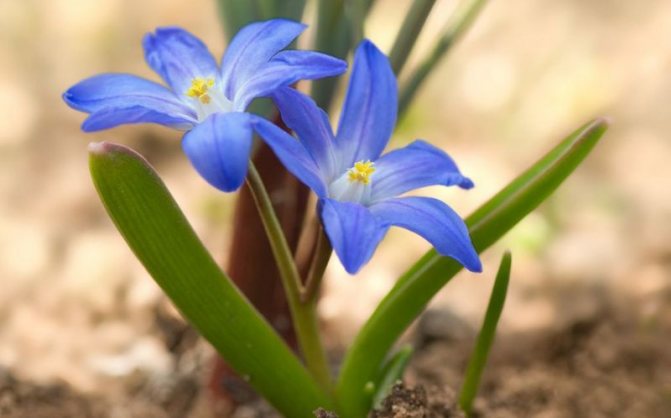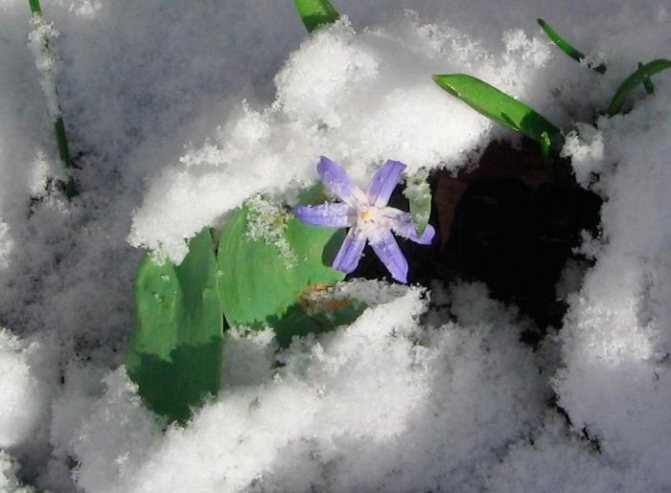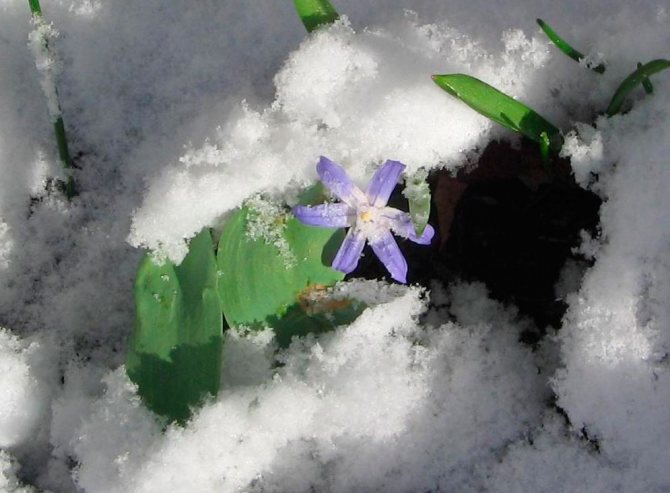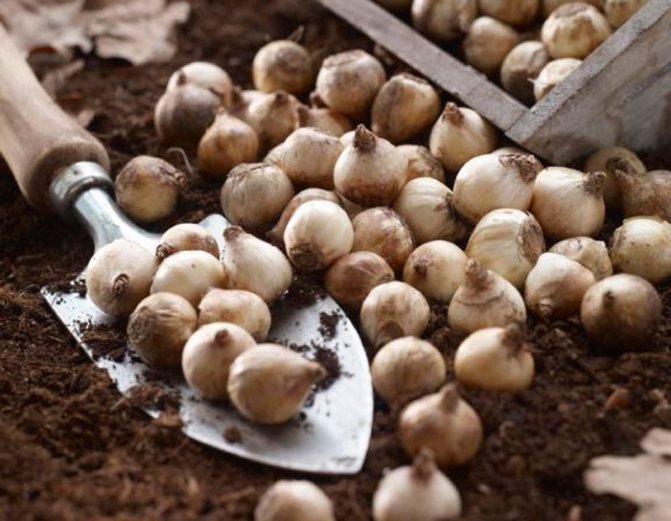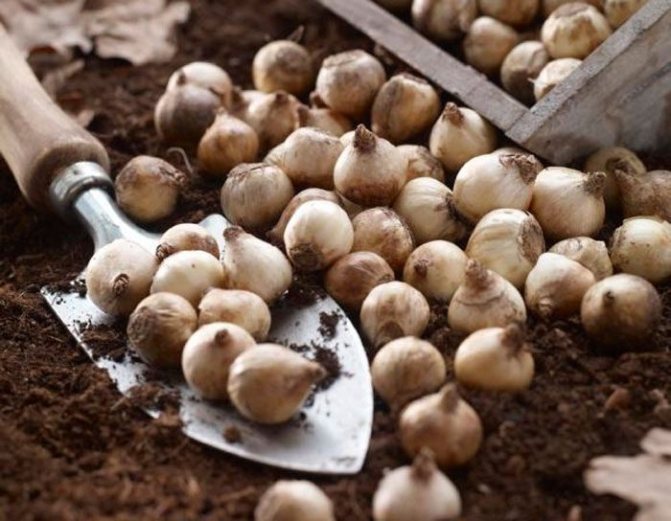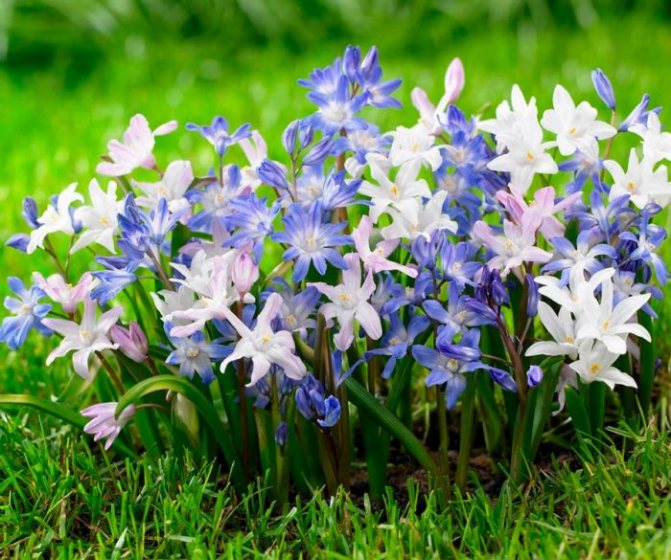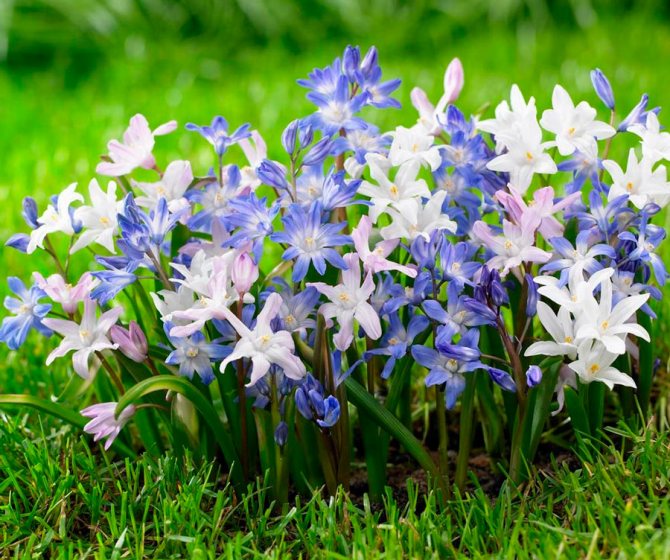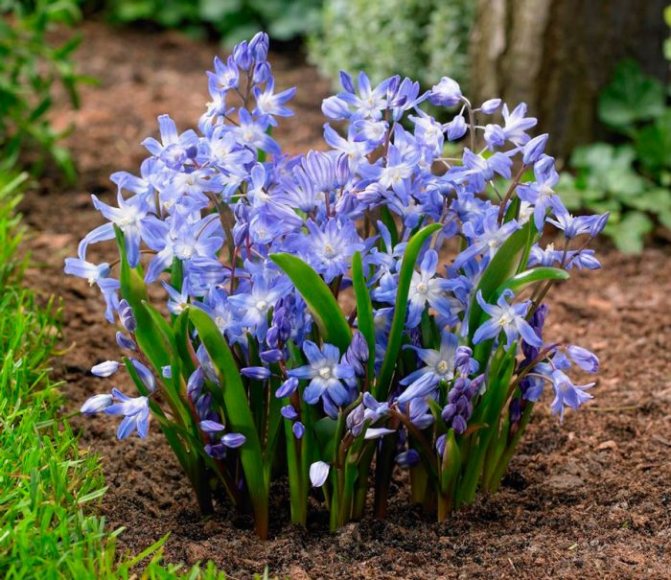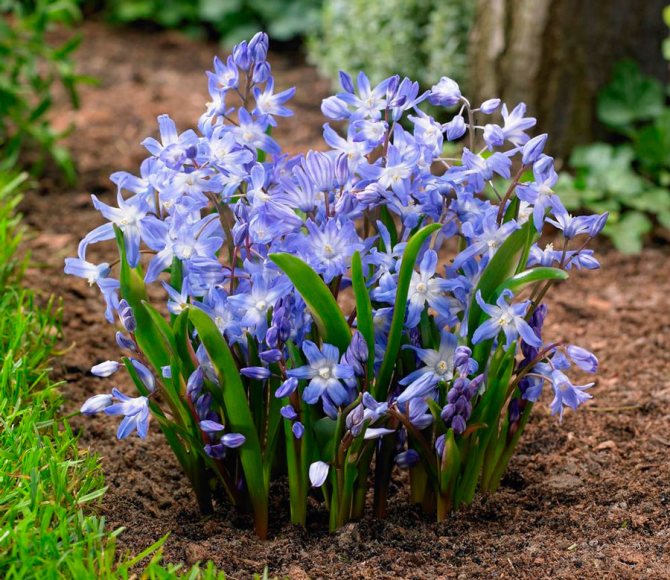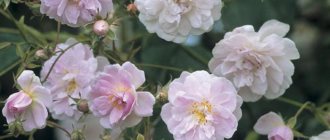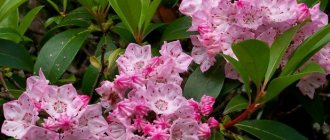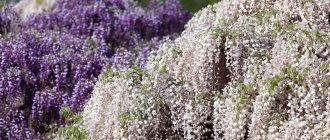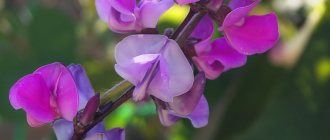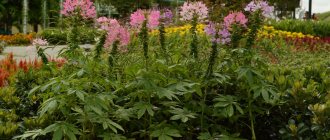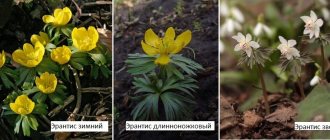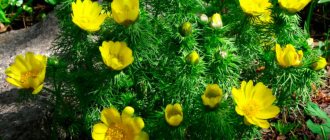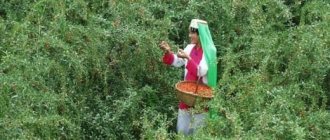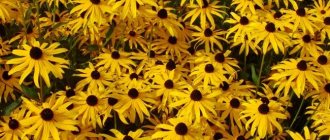Low-growing perennial plants Chionodoxa are representatives of the Scylla genus of the Liliaceae family. To date, 6 species of such a plant are known. In nature, they can be found on the island of Crete and in Asia Minor. The name of this plant consists of 2 Greek words, which translate as "snow" and "glory, pride". People call him "snowman" or "snowy beauty". A delicate bush of chionodoxa with lovely flowers grows simultaneously with snowdrops and groves at a time when the snow cover has not yet completely disappeared from the ground.
General information
Due to its unpretentiousness, chionodox is widely used in the creation of spring beds, very often it can be found in rockeries or on an alpine slide. It goes well with almost all early spring flowers.
Planted under trees together with other bulbs, such as muscari, it will overcame in a spring garden.
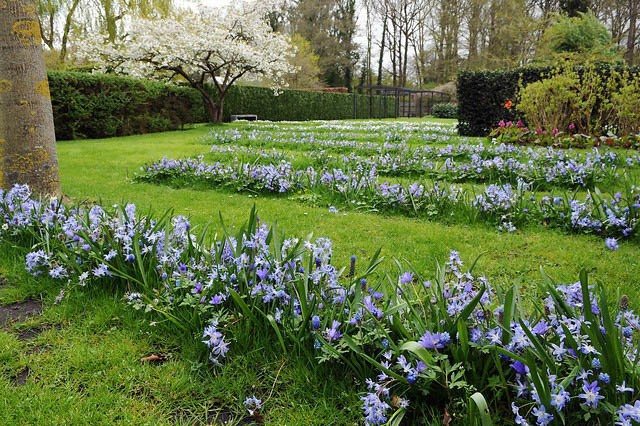
At present, botanists have disbanded the genus Chionodox and attached it to the Proleski, but amateurs still call this flower by its former name.
If chionodox and redwoods grow in the garden at the same time, then very soon hybrids of these plants will appear and sometimes the result is very interesting.
The flowers of Chionodoxa are mostly blue; at the peak of flowering, they completely cover the foliage. One of the most spectacular blue chionodoxes is the chionodox Lucilia (aka Forbes).
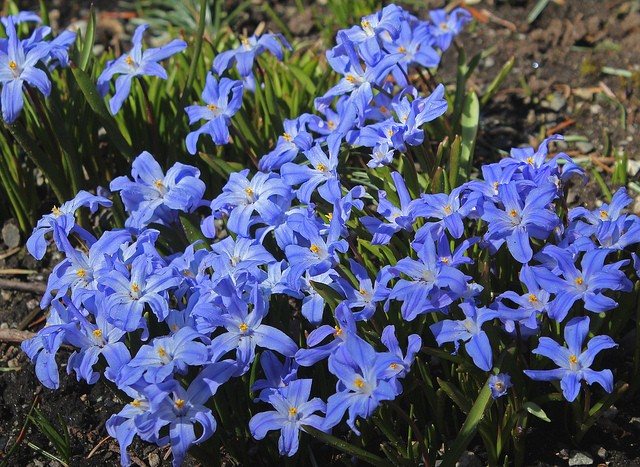

Garden forms of the plant can have other colors. The flowers may be pink.
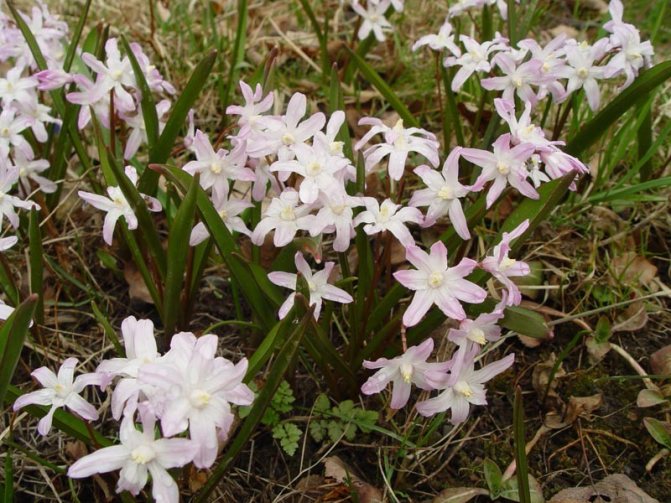

In the photo: Chionodoxa Pink Giant
You can see the Blue Giant in the title photo of the article. There are also white varieties known as "Alba". Today, this word is often called any white varieties of Chionodox, apparently because the Alba variety was bred in 1885 and it suffered the fate of the word "Xerox", which became generic from the name of the brand. On the net called alba, you can also see varieties such as below.
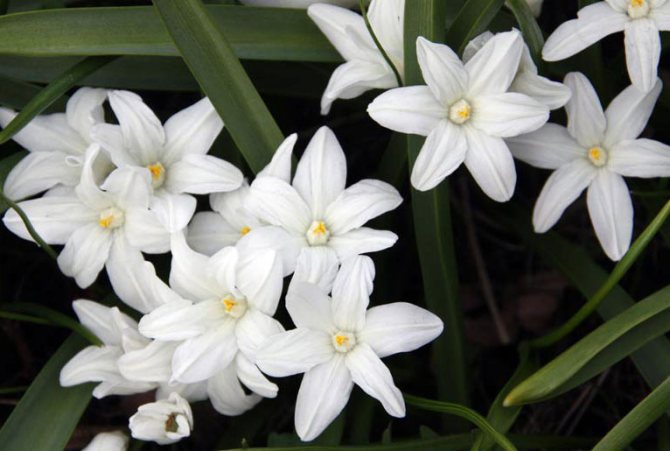

Photo: Chionodoxa Lucilia, Miss Alice cultivar
Features of Chionodox
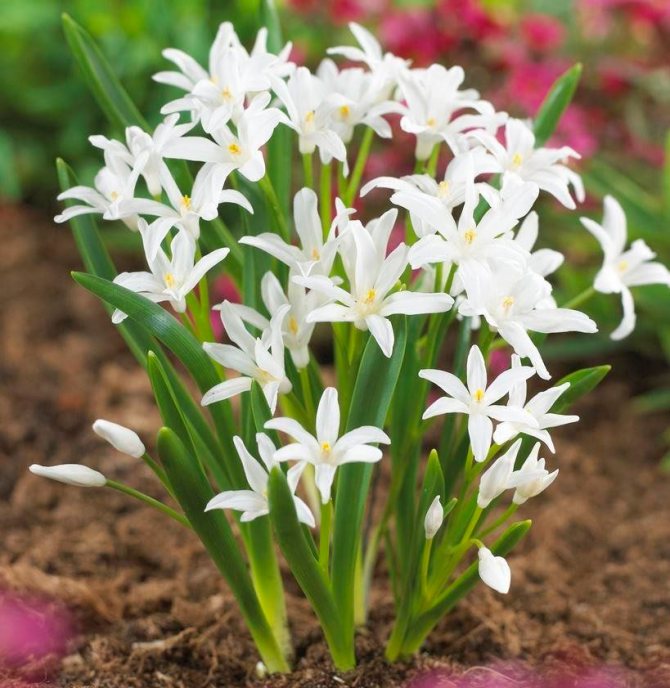

Chionodox are bulbous plants. At the same time, with the peduncles, a pair of basal leaf plates of a dark green color grow, they are grooved and broadly lanceolate, and reach from 8 to 12 centimeters in length. Loose brushes, located on peduncles, consist of six-petalled bell-shaped flowers that are blue, pink, white or blue in color. The fruit is a juicy box, and inside it are black seeds. Ovate bulbs are about 30 mm long and about 17 mm across. Their surface is covered with light-colored scales. These bulbs are designed for 2 annual cycles.
Planting and leaving
Seat selection
Chionodoxa is a rather unpretentious plant, but it is better to plant it in loose and fertile soil, in this case it will grow in one place for many years, growing more and more. If the bulbs are planted on clay soil, the babies will form slowly, and the flowering will not be so abundant or even stop altogether.
It is preferable to choose a place for a flower sunny or with a light openwork shade.Since the flowering of chionodoxa occurs in early spring, when the leaves on trees and shrubs have not yet blossomed, it can be placed in the near-trunk circles.
The faster the place where Chionodoxa grows warms up, the faster it will bloom. If you plant it near large stones, where thawed patches form first, then flowering will come when there is still snow. Blue, pink and white flowers are very impressive against the background of a snowy space, reminding that spring has already come.
Also, when choosing a place, one should not forget that after flowering, the leaves and peduncles of chionodoxes turn yellow and die off, so the empty space should be covered by the leaves or flowers of another plant. The hosta is very good in this regard, since its late growing leaves will not interfere with the flowering of chionodoxa, and then they will close the empty place. Adenophora, which has a lush root rosette of leaves, will perfectly cope with this task.
Loose soil is one of the key points when planting a chionodox, so if you plant it in tree trunks, then it is advisable not to allow this place to be completely turfed in summer.
Care before and after flowering
Chionodox does not require special care, especially if the place is chosen well.
If possible, after the leaves appear, the soil around the flower must be carefully loosened and last year's leaves and grass removed.
The plant does not need watering, at least in the middle lane, where at this time of the year the soil is sufficiently saturated with moisture.
You can apply a complex mineral fertilizer under Chionodox, diluting in the proportion recommended by the manufacturer, this can be done at any time of the plant's growing season, but it is better until the moment when the leaves begin to turn yellow.
Until the foliage turns completely yellow, it is recommended not to cut it off, if the bushes are thick and yellowing leaves spoil the view, you can periodically "comb" them with your hands or a rare rake, and remove those leaves that are easily removed from the ground. Carrying out this procedure several times, you will gradually remove all the leaves, and the flower bed will have a neat appearance.
After the growing season of the chionodox is over, and the transplant is not planned, it no longer requires care.
Chionodoxa, very fond of "running away" from the place allotted to her. Therefore, in the spring, its flowers can be found in the most unexpected places. This is due to the fact that the ants take away the ripe seeds, which have good germination. Therefore, if you are a supporter of order in the flower garden, then after flowering, remove the flower stalks with the seed boxes formed on them.
Shelter for the winter
Despite the fact that Chionodox hails from warm places, in our climate it has taken root well and hibernates without shelter. The only thing you can cover with a small layer of leaves is varietal forms.
Types and varieties of chionodox with photos and names
In nature, there are 6 types of chionodox, but gardeners grow only 3 of them, as well as various hybrids and varieties obtained from these species by breeders.
Chionodoxa forbesii, or Chionodoxa tmolusi
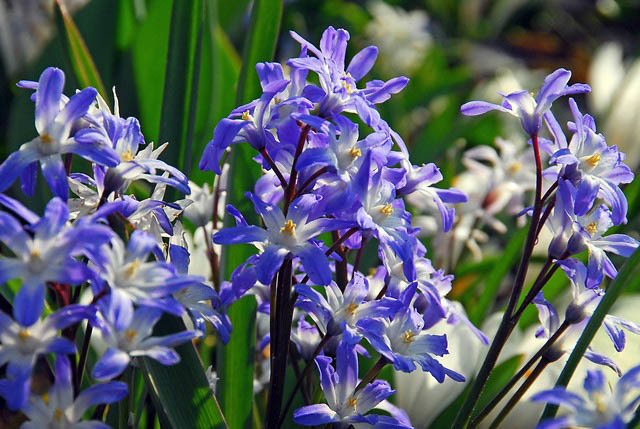

In the wild, this species grows in the southern part of Turkey. The height of the bush is about 0.25 m. The peduncle bears a loose racemose inflorescence, which consists of 15 pink or white flowers. This plant does not form seeds, however, the bulbs are overgrown with children every season. Cultivated since 1976 Cultural varieties:
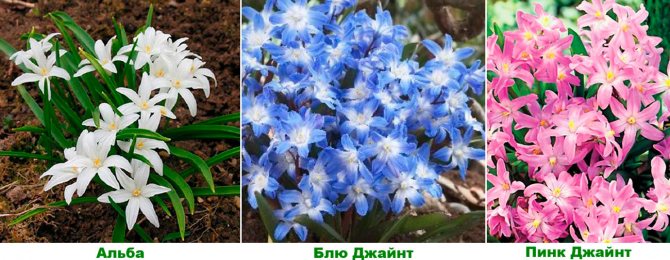

- Alba - the color of the flowers is snow-white;
- Blue Giant - the perianths of this plant have a deep blue color;
- Pink Giant - the flowers of this variety are painted in a pinkish-lavender color.
Chionodoxa luciliae, or Chionodoxa gigantea
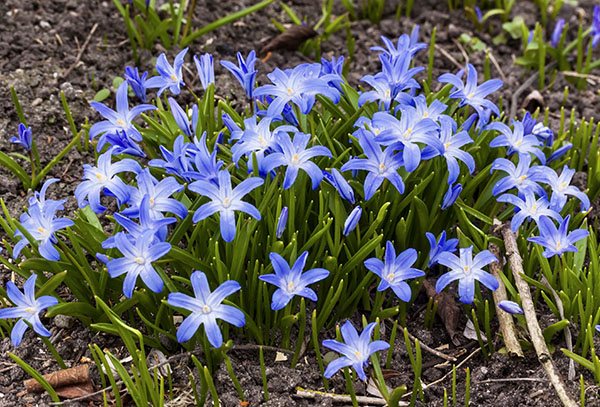

This species got its name in honor of Lucille Boissier. It occurs naturally in the mountains of Asia Minor. The height of the bush is about 0.2 m.The leaf plates of such a plant are grooved, linear in shape. The inflorescences include 10 flowers, reaching about 30 millimeters in diameter, they are painted bluish-blue, and their throats are white. It has been cultivated since 1764. The most popular varieties among gardeners are:
- White... The height of the bush does not exceed 10 centimeters. The flowers are white, and their diameter is 25 millimeters. In one racemose inflorescence, there are about 3 or 4 flowers.
- Pink... The flowers are pink with a slight purple tint. In culture, the variety of this variety is very popular - Chionodox Rose Queen (aka Rosie Queen or Pink Queen): this plant has flowers painted in a very spectacular shade of pink.
- Giant white... Flowers reach 40 millimeters across.
Chionodoxa sardinian (Chionodoxa sardensis)
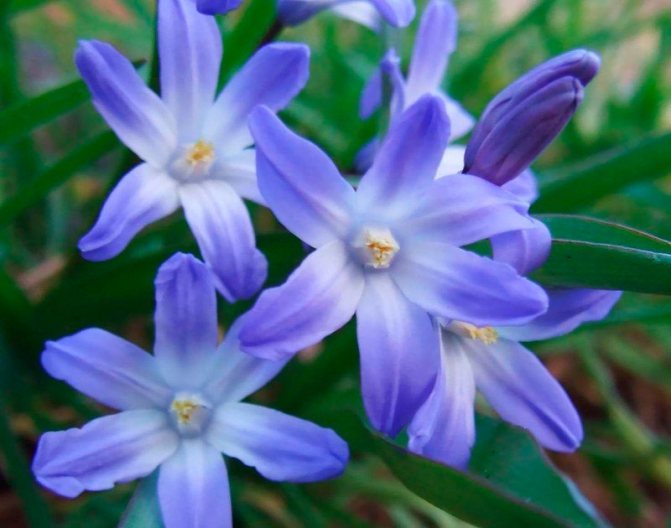

The homeland of this species is Asia Minor. The bush has a pair of linear leaf plates. The height of powerful peduncles is about 12 centimeters, they bear loose racemose inflorescences, consisting of 10 flowers of a deep blue color, reaching 20 mm in diameter. It has been cultivated since 1885. There is a garden form, the color of the flowers in which can be pink or white.
Breeders also use such species as Chionodoxa dwarf, or Cretan, Chionodoxa whitish and Mrs. Lok to obtain new varieties. However, the species themselves are not yet grown by gardeners. Breeder V. Khondyrev, using various species of this plant, was able to create a whole series of hybrids: Watercolor, Artemis, Absolute, Atlantis, Andromeda, Aphrodite and Arctic. Also quite popular among gardeners are hybrids created by crossing the Scylla double-leaved and Chionodox Forbes, they are called chionoscilla: the height of the bushes is not more than 10 centimeters, small star-shaped blue flowers are collected in dense inflorescences.
Reproduction
Chionodox can be propagated by bulbs or seeds.
Bulb propagation
After the plant has bloomed and the leaves have dried up, it is time to plant it. If a flower has been growing in one place for many years, then it has formed a clump of bulbs of different sizes. You need to carefully remove them from the ground, trying to select all the small children, dry them and send them either for storage until autumn or plant them in a previously prepared place.
If necessary, chionodox can be transplanted even in flowering form, but then you need to plant it as quickly as possible, since the delicate roots of the bulbs do not like drying, otherwise the transplant will not affect development and flowering in any way.
Seed propagation
Chionodox seeds have good germination, they are planted immediately after ripening. Since the first year or two, the sprouts look like green needles, the place of their planting should be carefully noted. After the young bulbs grow to bloom, they are planted in a permanent place.
How does it multiply
Each chionodox bulb forms a huge number of babies, and the seeds that fall on the soil germinate well. That is why even a primrose recently planted on the site at a speed forms a wonderful "living mat", which is very important for the climate of the Moscow region. Bulbs of these flowers can be easily found in specialty shops for gardeners or from seed dealers. It is important to remember that a lot of seed material is not required: a small flowering flower bed will already be obtained from several root bulbs.
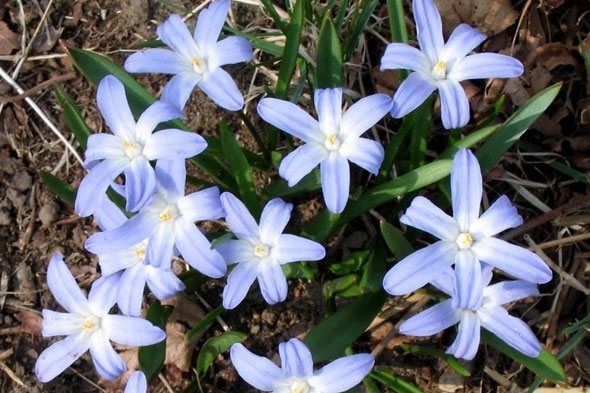

The plant reproduces in two ways:
- vegetative (with the help of children),
- seminal.
Planting bulbs
For the season, each flower bed of chionodox develops 2 - 4 baby bulbs. It is best to dig them up in July, and replant them to a new place in late summer - early autumn. All the time before planting, the cornel bulbs should be stored in a dry, cool place with good access to fresh air.
The bulbs are buried in the ground at a distance of 5 - 8 cm, every 5 cm. For wintering, the planting should be covered with a layer of sawdust or film. In this form, the bulbs can withstand temperatures up to 20 degrees below zero.
Sowing seeds
Seeds are usually sown in the fall when the soil is nutritious and moist. The only disadvantage of this method of reproduction of chionodox is that they will bloom only 3-4 years after planting.
The plant is more likely to reproduce by self-sowing: the seeds of chionodox are as if designed by nature itself so that they would be liked by ants. Thus, small workers not only satisfy hunger, but also carry seeds over long distances. True, the plant propagated in this way runs wild over time.
Distillation
Chionodoxa is suitable not only for outdoor cultivation, but also for forcing.
In the fall, the required number of healthy large bulbs are selected and planted in a pot, which is then transferred to a room with a temperature of about zero degrees. About a month before you need to get flowers, forcing begins directly. To do this, the pot of bulbs is transferred to a warmer and brighter place and kept there until the leaves grow back. And only then the chionodox is brought into a warm room.
After flowering, the leaves are allowed to dry out and the pot is removed back to a cool room, and in the spring they are planted in the ground.
The same bulbs do not need to be used for forcing for two or more years in a row.
Plant descriptions
Chionodox bushes are low. They are cultivated all over the world.
The love of flower growers for this plant is confirmed by the second name - "snow beauty". The buds of the plant appear almost simultaneously with the very first flower of spring - the snowdrop.
Photo of the Chionodox plant
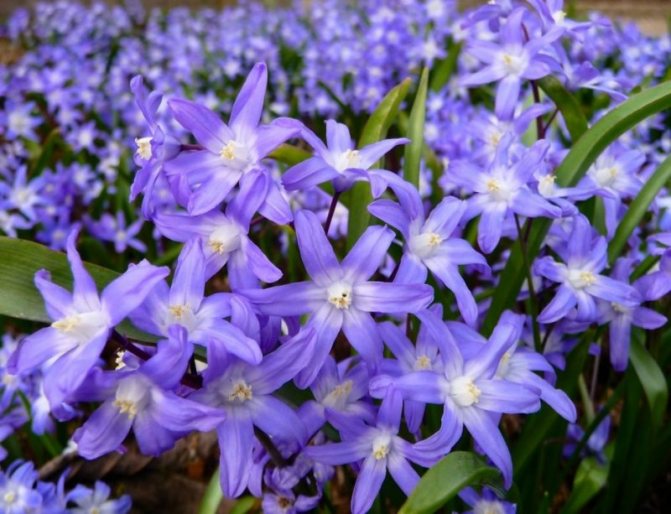

The bulb serves as a root system for the plant. Young shoots appear from the tuber in spring, and then peduncles with buds. Narrow-shaped leaf plates rarely exceed 12 cm in length. They are juicy-green in color, against which a delicate bell looks especially advantageous. It is small in size and painted in gentle tones of blue, pink, purple or white. One peduncle can harbor several bells. The chionodox flower in the form of a lowered bell consists of 6 petals with curled edges of an oblong shape. Sometimes it happens that the color of the petals loses its saturation from the edge of the petals to the central part of the flower.
BEAUTIFUL FLOWERS!
Kiss of the sun - escholziaGrace "Grace"Solar rudbeckia
The corolla is about 4 cm in diameter. Chionodox bloom lasts for 20 days. All the beauty of the plant lies in the ease of care, early flowering and the abundance of flowers replacing each other.
Chionodoxa - video
What to combine with
A large chionodox bush growing separately looks very impressive.
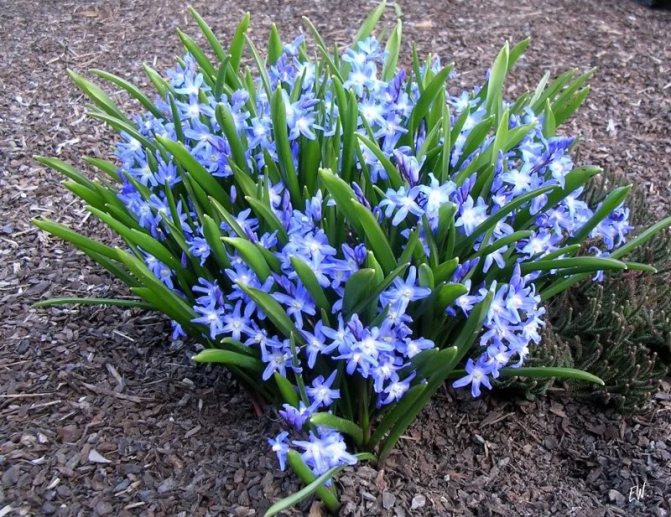

Chionodox looks very beautiful in combination with snowdrops or crocuses.
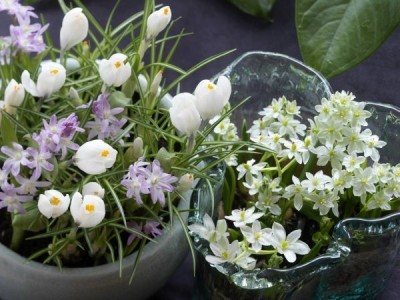

When choosing neighbors for a chionodoxa, be guided by the following indicators:
- flowering period;
- growth requirement;
- the aggressiveness of the neighbor plant.
Chionodox combines very well with early-flowering small-bulbous plants that contrast with it in color, for example, with snowdrops, crocuses, white flowers, although the latter bloom a little later.
It will look great with a variety of primroses, anemones and crested beetles.
It is possible to plant it with such small-bulbous ones as scrub and Pushkinia, but there is a possibility that they will simply get lost against the background of each other, the exceptions are chionodoxa pink and white.
But blue muscari will look great with chionodox due to the contrasting flower shape.
Some chionodox curtains also look good, especially against the background of large stones or garden figures.
A large clump of chionodoxa, planted around a flowering forsythia bush, looks very unusual.
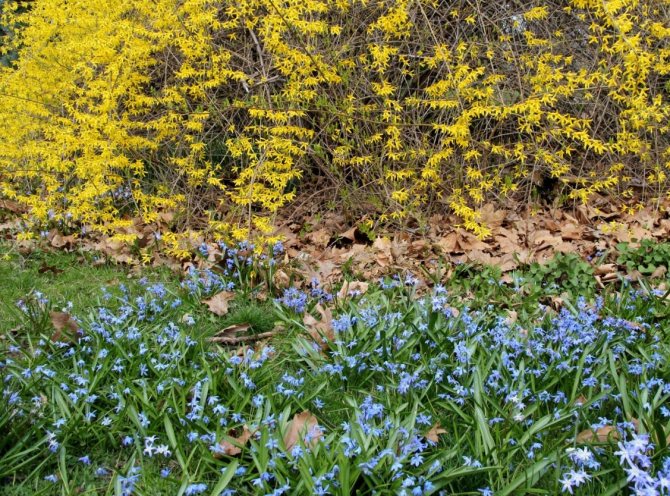

general information
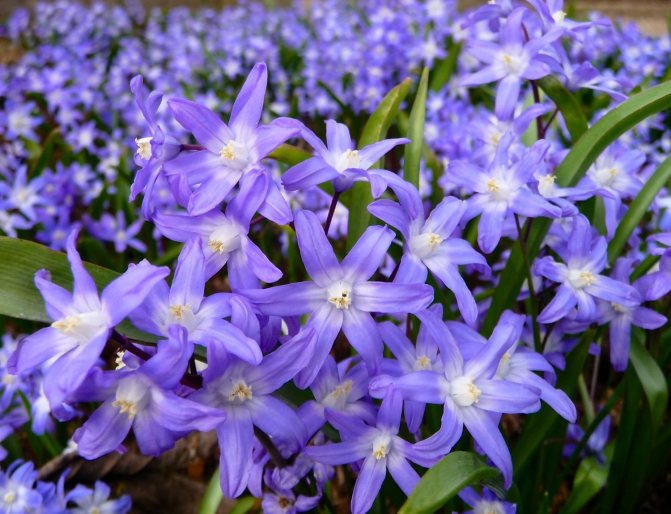

This perennial shrub belongs to the Liliaceae family. Due to the fact that its flowering begins quite early, it is sometimes called the snow beauty or snowman.
The height of the ornamental culture does not exceed 15 cm. Flowers are either collected in racemose inflorescences, or single. The average diameter of each is 3-4 cm. They can be white, pink, blue or light blue.
The fruit of the culture is miniature boxes with large seeds, the appendages of which ants like to feast on. The bulbs are oblong or ovoid and contain small scales on the surface. The root system is annual.
Chionodoxa feels great both in partial shade and in places under the sun. If you plant an ornamental plant in a place where the snow melts very early, then it will bloom very early. In shaded conditions, flowering will be slightly delayed. This flower loves fertile soil with a high-quality drainage layer from:
- sand;
- pebbles;
- rubble;
- ground brick.
It is noteworthy that the Chionodox does not need to be covered for wintering. She calmly tolerates even severe frosts.
Chionodox in landscape design
Excellent decorative properties and aesthetic qualities, unpretentious care and long flowering make it possible to use chionodox in landscape design. Luxurious alpine slides and natural rockeries will help the spring primrose reveal its pristine beauty, and the flower arrangement of these plants, located in the shade of a spreading tree, looks very picturesque and tempting. A bright, picturesque spot that does not require special care will be the best decoration for any personal plot.
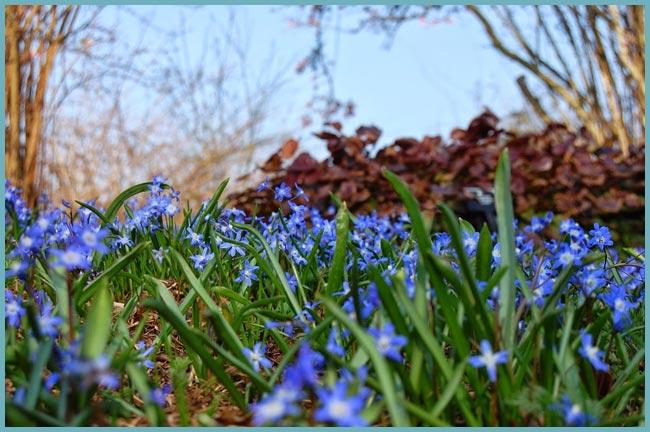

Chionodox in landscape design
Wintering
At the end of the flowering of the snow beauty, it is necessary to get rid of all the arrows. The leaves do not touch, cutting it off only after drying (it happens somewhere in the middle of summer). The culture, by the way, is characterized by tolerance for cold temperatures. However, if you planted a chionodox in an open area, then in the fall the soil needs to be covered with spruce branches or a good layer of fallen leaves. If your region has a pleasant climate, then you don't need to harbor the culture.
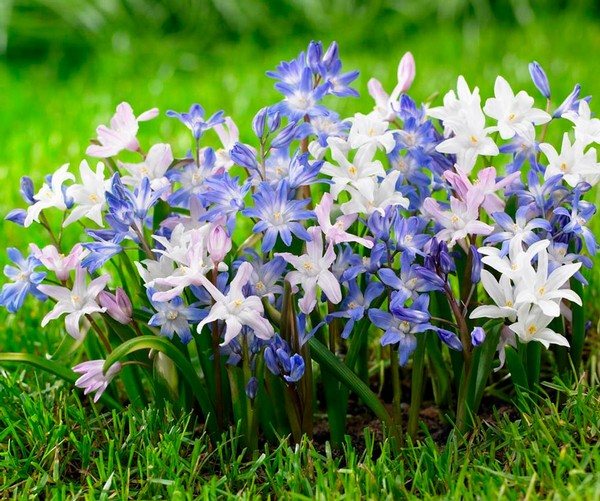

When Chionodoxa stops blooming, you need to rid it of the arrows
Diseases and pests
Improper cultivation of chionodoxa and improper care of the bulbous plant threatens bulb rot and achelenchoides, which is dangerous because the scales of the bulbs begin to change their color to an unpleasant brown, and eventually they rot. The surface is covered with brown necrotic spots, and ring rot is visible on the entire cross section. Sick garden culture does not develop well and almost does not bloom, it looks very painful and not very aesthetically pleasing.
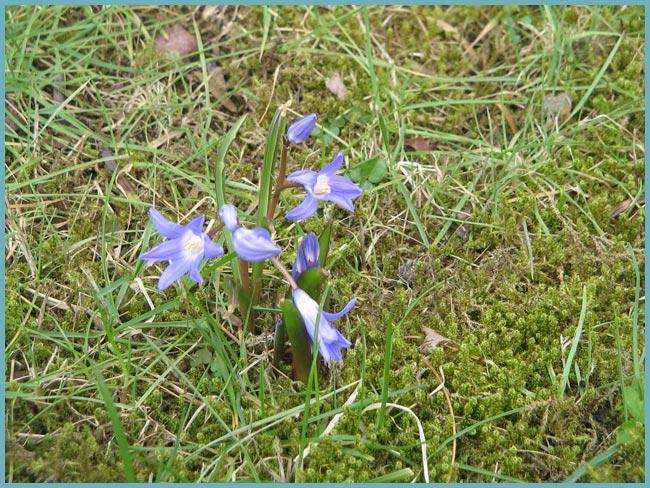

The most common chionodoxa disease is bulb rot
Important! The main recommendation for novice gardeners is to boldly throw away damaged bulbs, do timely prevention of diseases, disinfect them with warm water, and cleanse the soil from vegetable litter.
Growing a crop from seeds
Seeds in fleshy capsule fruits come up towards the end of spring. They must be collected, dried and left in a dark and dry place.
Rules:
- sowing is done in the middle of autumn;
- it is necessary to dig up the soil, level it, arrange small holes and place seeds there, which are covered with a small layer of earth on top and moistened by fine spraying;
- mulching is not required, but in winter it is recommended to cover the plantings with a sufficient amount of snow - this way you get the best microclimate.
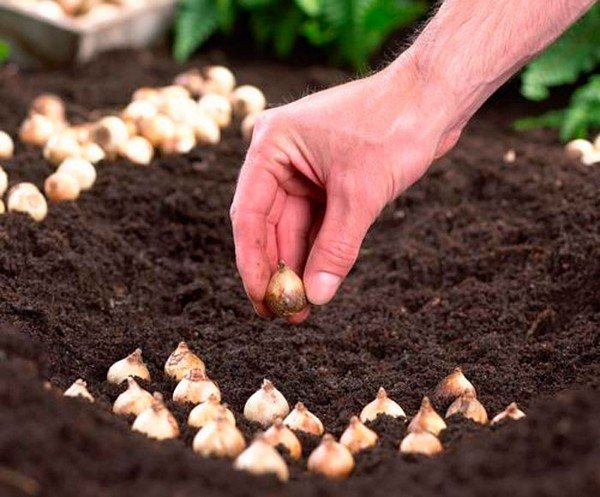

Chionodox are sown in the fall
Important! Before the start of flowering, crops growing from seeds require about three years to develop.
Landing in open ground
There are several basic rules for planting a "snow beauty" at a summer cottage. In order for the plant to please with its flowers, you will have to make some effort.
Planting tips:
- It is best to choose autumn time for planting. During this period, the plant bulbs have already managed to overgrow with basal ridges;
- Choose fertile soil, with a neutral environment, high drainage properties. Chionodox can be fed with forest turf (they are especially happy with it), which is mixed with decayed foliage and crushed pieces of tree bark. This will help the plant quickly get used to the garden plot;
- Choose for planting areas with a lot of light or, in extreme cases, located in partial shade. Full shade is detrimental to the inflorescences, so at best you can get a regular bush without any flowers. You can choose a place located under trees with spreading leaves (they usually bloom only at the end of the flowering of chionodoxa);
- On the site chosen for planting, make several grooves located at a distance of 10 cm from each other. Put an onion in each recess. The larger the diameter of the bulb, the deeper it needs to be planted. The smallest ones are planted to a depth of 5-6 cm, and the largest ones by 7-8 cm. After planting is complete, feed the seedlings with nitrogenous fertilizing. It is important to remember that forest soil should be scattered near the landing. This will help chionodoxes adapt more quickly to the site;
- Snowdrops can be chosen as plant neighbors, as well as early flowers (those that begin to bloom in early spring). It is best to plant chionodoxes under trees with sparse foliage, in places of moderate shade. Well suited for neighborhood primroses, hyacinths, irises, crocuses, adonis, hellebores.
Chionodoxa "Violet Beauty" (Purple Beauty)
Refers to perennial, bulbous plants. Flowers in the form of bells with five, six petals, 4 cm in diameter, collected in compact clusters of purple inflorescences,
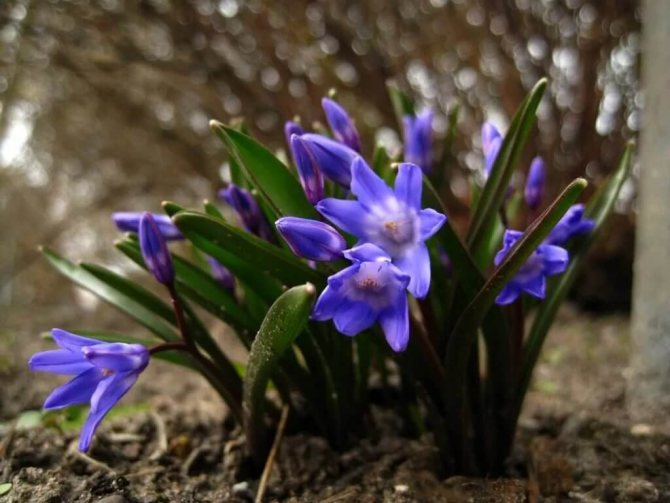

with a transition to the pharynx in a milky shade. Prefers places with variable illumination. Resistant to temperature extremes.
Ideal for decorating flower beds of different difficulty levels and alpine slides.
Choosing a site for growing
So, for growing chionodoxa, a sunny area is suitable: in places where the snow melts in the first place, the plant will bloom earlier. Slight shading is acceptable. For example, in the rare shade of deciduous trees, in which leaves bloom late, Chionodoxa will grow normally. Strong shade results in slow development and poor flowering. The most suitable places for growing such a plant are rockeries or an alpine slide.
Fertile soil is required: with a rich layer of humus, or the quality of the soil must be improved by applying fertilizers (add humus or compost for digging). Looseness and good drainage are important; coarse river sand is suitable as a baking powder.
Fertilization and feeding
After the early flowering culture has formed shoots and peduncles barely appeared on the surface of the soil, the plant's need for feeding increases. Usually gardeners use nitrogen.
Attention! The fertilizer is gently scattered around the flowers. In this case, it is important to ensure that it does not fall on the leaves, otherwise you can cause a burn!
Then the topsoil is slightly loosened. This stimulates air and water metabolism, and also leads to faster and better absorption of nutrients by the rhizomes.
Differences between Chionodoxa and Proleski
A common question that arises among gardeners is what is the difference between Chionodox and Prolesca?
First, you need to pay attention to the external differences in the structure of the flower. Chionodoxa has flowers that resemble a six-pointed star, their cup always looks up. The second culture has drooping, bell-shaped flowers.
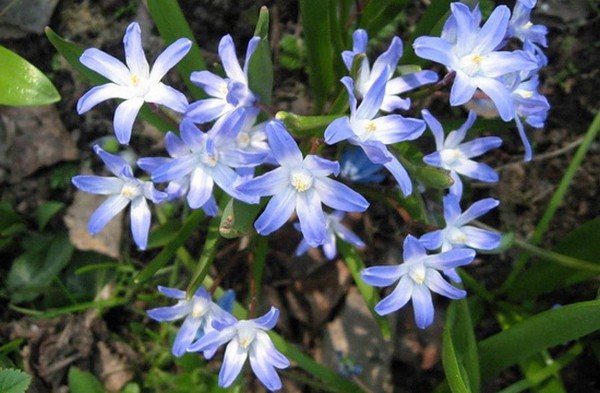

Chionodoxa, although similar, is still different from the woodland
The main difference lies in the specifics of the stamens. Chionodoxa has stamens tightly adjacent to each other, they create dense bases.Proleska has free and not grouped stamens.
Important! In addition, in comparison with Proleskaya, Chionodoxa is only a spring plant species. Proleska among its number has varieties that give flowers in the autumn.
In its natural habitat, the perianth of the snow beauty has an exceptionally blue tint, and the petals are painted like this: blue at the edge, light blue and white towards the center. The petals of the wild woodland are uniformly colored.
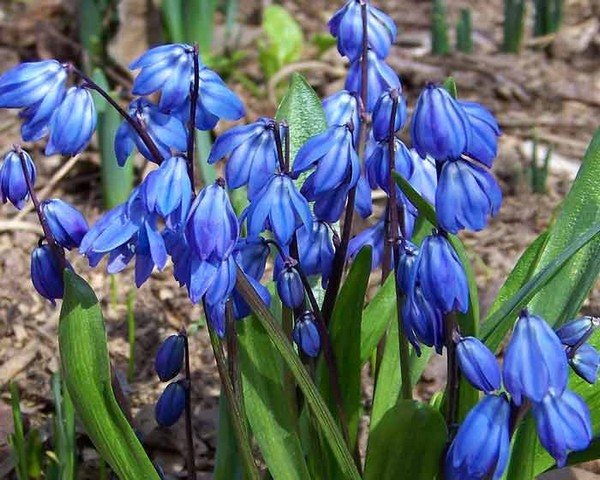

The petals are uniform in color
Views
Chionodoxes have several main types. Some of them began to be cultivated as early as the 18th century. Later, as a result of the work of breeders, many species and varieties appeared.
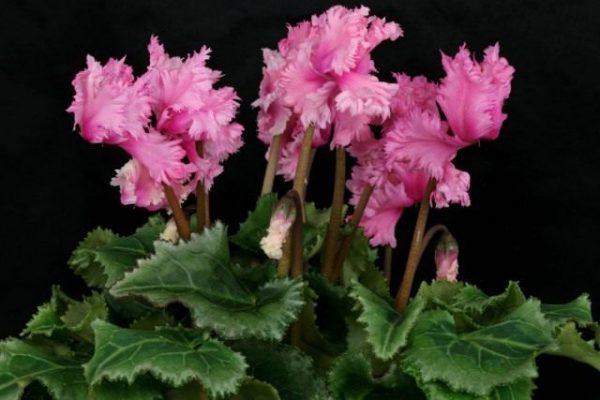

Forbes
Gives the highest shoots that reach up to 25 cm. It blooms with gentle blue flowers, with a light core. One inflorescence contains 3 - 4 flowers. Each of them consists of 5 petals.
Lucilia
The second name is Chionodox Giant. Forms high peduncles up to 20 cm. On the shoots there are flowers collected in inflorescences of 2-3 pieces. They are white, hairless, pink or purple in color. This is the very first species that began to grow on their own plots.
Sardinian
Flowering begins at the end of March. The bulbs are brown in color, producing bright blue numerous flowers, with a diameter of about 20 mm. Shoots reach 12 cm in height. About 10 flowers bloom on one plant.
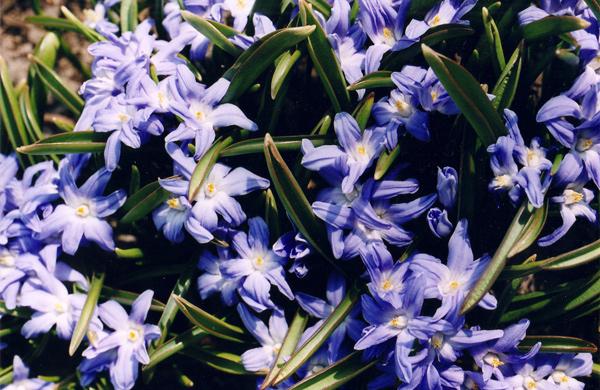

Dwarf
Flowering occurs in April or May. Of all the representatives, it gives the shortest shoots, which are up to 11 cm in height. At the top are inflorescences of 2 - 3 flowers, with a color from pale blue to pale pink.
Whitish
The bulb is medium in size, covered with a brown skin. Shoots are low, about 12 cm, flowers are small. 1 cm in diameter, white or pink. Leaves are straight, dark green. Single inflorescences.
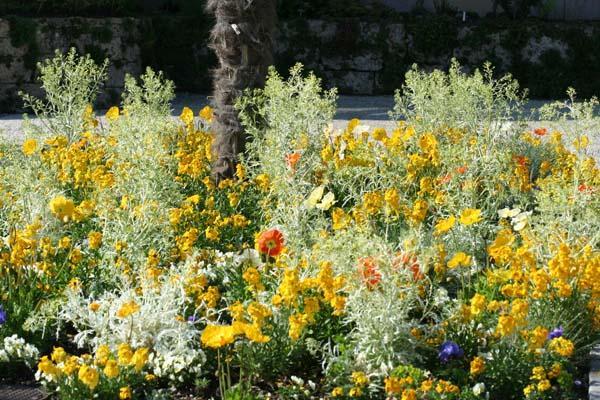

Madam lok
A poorly studied species, shoots are low, about 12 cm. At the top are blue or purple flowers, collected in inflorescences of 7 - 8 pieces. Flowers 2 cm in diameter.

